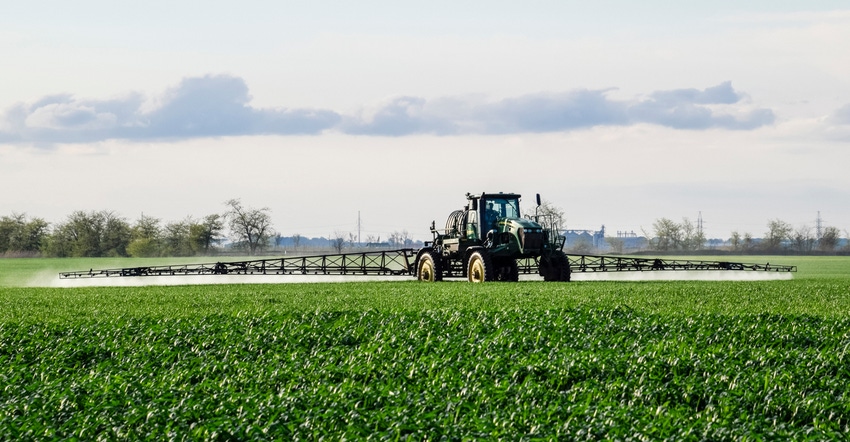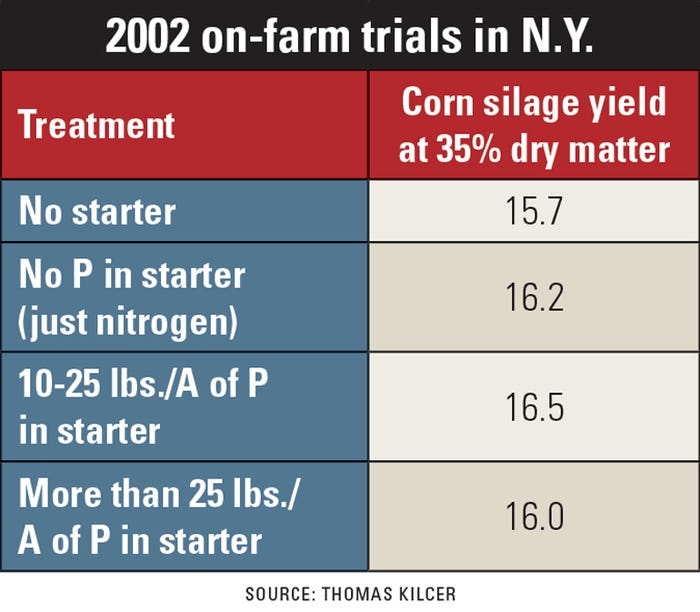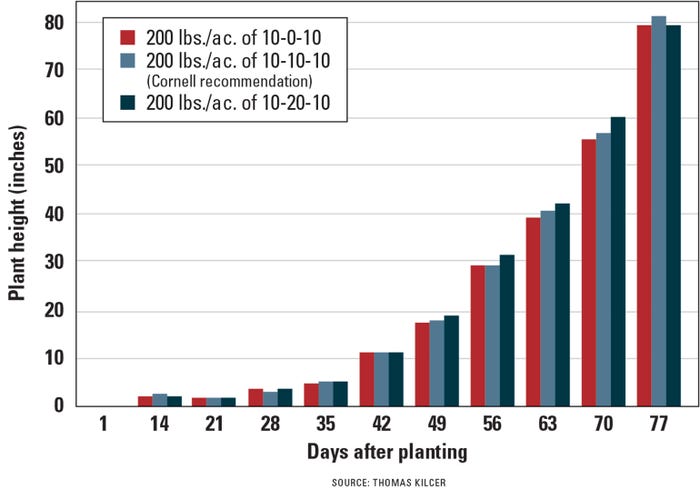February 15, 2022

In this time of high fertilizer prices and tight supplies, farmers are looking for cost-effective options that will still support high yields and save them some money.
A previous column I wrote touched on the importance of soil testing to see what is needed in your soil, not just guessing what your soils need. It has been clear from looking at soil samples over the past 40 years that fields with regular manure applications are testing high to very high in phosphorus.
This is especially true for fields that have manure spread daily or without immediate incorporation. The nitrogen fractions volatilize and are lost while the phosphorus mostly remains. Thus, more manure is applied to meet the nitrogen needs of the corn, and excess phosphorus above and beyond the needs of the crop accumulates.
A high to very high phosphorus level means that the odds of getting an economic return on starter phosphorus are nearly zero. The main concern for farmers is that planting in cold soils in early spring will not allow the plants to get the available soil P, and so will still respond to starter fertilizer P.
Unfortunately, some next-generation growers have missed some critical work done by Cornell’s Quirine Ketterings 20 years ago to clearly answer this very question. That year, May started warm and got colder as the month progressed. The deluge of cold rain on Mother’s Day started a slide that culminated in 5 to 6 inches of snow at the end of the month.
Research on cold, wet and low- to medium-testing soils with phosphorus showed a response to starter P. For those fields, you increased yield and made money with banded P.
The table below shows the average corn silage yield on 16 on-farm trials conducted in nine New York counties the same year.
These fields tested high or very high in phosphorus.

Today's yields are 50% higher, but the soil fertility principles remain the same. The question answered that year was, “Is there still a response to phosphorus on the higher P-level soils because of cold, wet conditions?” As can be seen in the table, there was a response to starter fertilizer containing nitrogen.
But there was no response to P for soils testing high in phosphorus. This lack of response occurred in both silage and grain. If there are enough available nutrients in the soil to meet the needs of the crop, there is no economic response to adding more of that nutrient.
With the high price of fertilizer, you must buy with purpose of assured economic return.
A farmer who followed the above recommendations using just nitrogen starter found his field efficiency improved, as he was able to plant nearly three times the acreage before having to stop and refill. Despite cold, rainy temperatures and a major snowfall after emergence, his corn grew as well as it ever had.
Will the lack of phosphorus in the band delay maturity?
First, we must be clear that we are talking about high P levels from soil tests based on Cornell research. The definition of “high” means that there is little to no response in crop improvement or yield to pay for that extra fertilizer. If your soil test is medium or low, there will usually be a yield and maturity response to additional phosphorus in the band.
The graph below shows what occurred at one of multiple sites across New York. There was no significant delay in plant height, and there was no delay in maturity in the zero-phosphorus plots compared to those with P in the band. The early-season growth was the same for each.

So, should you still use starter? Definitely!
We are still suggesting a starter fertilizer of just nitrogen. A cold, wet soil has very slow organic matter breakdown, and the crop will respond to nitrogen, plus sulfur, in the 2-by-2 band. Add 30 pounds per acre of nitrogen in the band (2 over, 2 down) to carry the plant well into June, when the soils are assured to be warm and the root system big enough to get manure or sidedressed nitrogen.
For those who inject manure and plant over the injection zone, you already have banded fertilizer, so more is not needed.
Farms rarely have uniform soil tests across all fields. Using a nitrogen starter on high-phosphorus fields and a starter with phosphorus on medium- or low-phosphorus fields may be a bit of a hassle, but it can make a big difference on the cost of the crop you are growing this year.
For those with liquid fertilizer systems, having two nurse tanks — one with P and one with just nitrogen — allows you to make a mix for the field you are planting. It is not exact, but it will get you most of the fertilizer savings.
Kilcer is a certified crop adviser in Rutledge, Tenn., formerly of Kinderhook, N.Y.
About the Author(s)
You May Also Like




